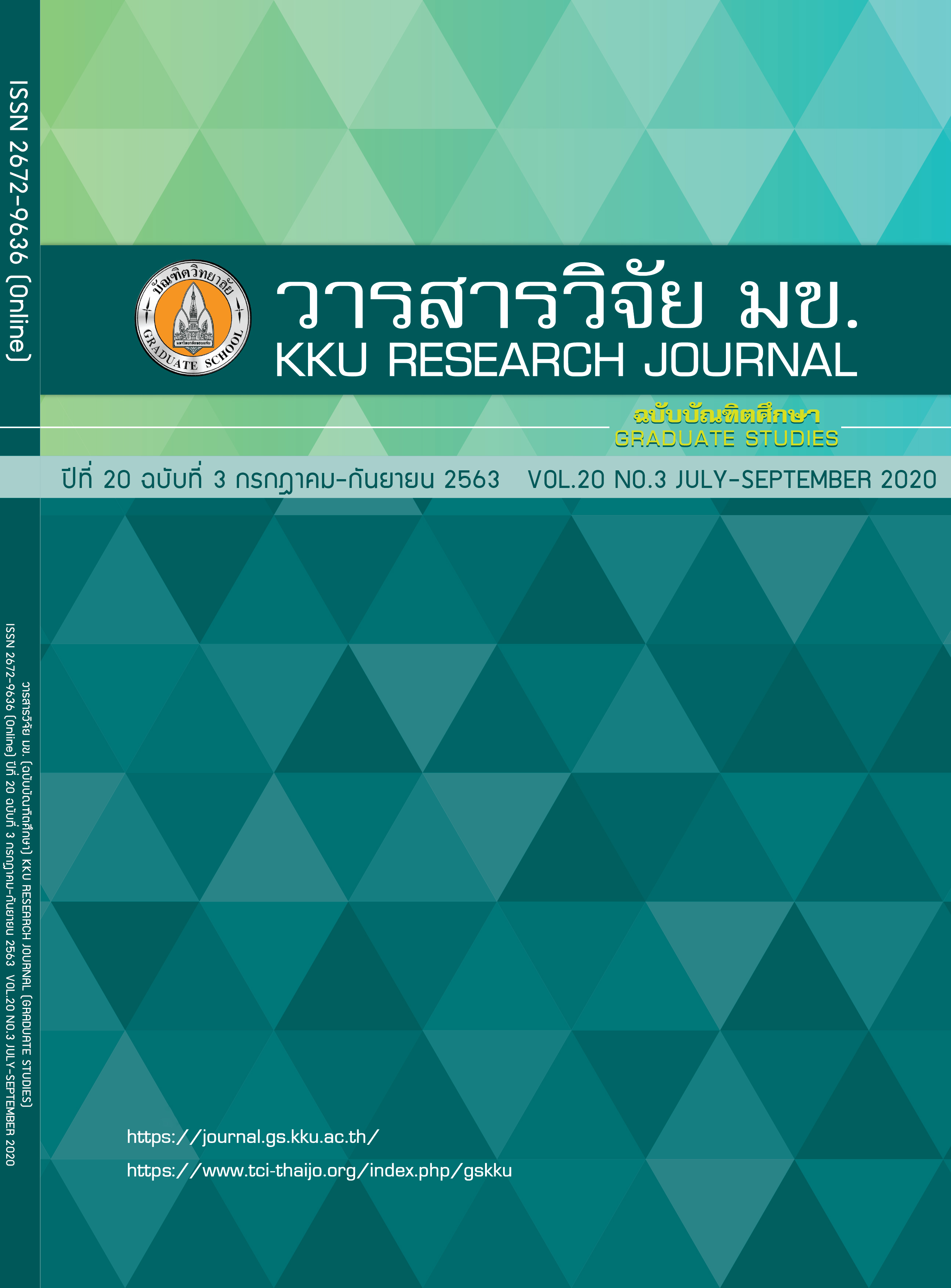Pesticide Residues in Soil, Drinking Water and Vegetables in Household in Rambutan and Durian Farms
Keywords:
Pesticide residues, Rambutan farm, Durian farmAbstract
This cross-sectional descriptive study aimed to investigate the household pesticide residues in soil, drinking water and some vegetables crop located in rambutan and durian farms. The samples were collected from 80 households in rambutan farms at Ban Na San District, Surat Thani Province and 48 households in durian farm at Tha Sala District, Nakhon Si Thammarat Province. All samples were tested by the GT-Pesticide Residual test kit. The results indicated that the pesticide residues could be found the collected soil, drinking water and vegetables from the rambutan (53.75, 42.50 and 35.00%) and the durian (54.17, 56.25 and 81.25%) farms in the safety standard zone. In addition, the pesticide residues level in the soil (2.5%), the drinking water from ponds and canal (3.75%) and the vegetables including chilies and eggplants (3.75%) from household in rambutan farm were detected to be in harmful zone. All of samples from households in durian farm were not found pesticide residues at harmful zone. Therefore, households living in rambutan and durian farms are recommended to wash pesticide equipment far away from the drinking water source. Farmers should avoid eating vegetables during spraying of pesticides and should use suitable method to wash vegetables. Farmer should know about pesticide residues, thus be aware of the pesticide’s danger.
References
Pengput A, Pramual P. Factors association with the risk of pesticide residues by cholinesterase blood test of agriculturists in Songplueay Sub-district, Namon bistrict, Kalasin Province. KKU Journal for Public Health Research. 2017; 10 (1): 47-62. Thai.
Phadungsil S. Farmers’ knowledge and behaviours in the use of insecticides, Wang Sapparot Sub-district, Khlung District, Chanthaburi Province. Master of Public administration program (Public and private management) Graduate school of Public administration, Burapha University. 2013. 73 pages. Thai.
Angsungnuen S. Environmental impact from pesticide utilization. EAU heritage journal Science and Technology. 2015. 9 (1): 50-63. Thai.
Siripanich S. Situation and Health Effects Related to Pesticides, 2013. Weekly Epidemiological Surveillance Report. 2013. 44(44); 689-703. Thai.
Suwannarach A, Kessomboon P. Pesticide hazards prevention among farmers of the Muang baeng Tam bon Health Promotion Hospital Catchment Areas, Nong ya plong Sub-district, Wang Sa phung District, Loei Province. Community Health Development Quarterly, Khon Kaen University. 2015. 3(3); 395-407. Thai.
Office of Agricultural Economics. Ouantity and value of imports of agricultural hazardous substances. 2018. Thai
Thongmuang P, Sudjaroen Y. Pesticide using behavior of agriculture at Samutsongkhram province. Academic Conference and presentation of the 6th national international research. 2015. 371-381.Thai.
Chaigarun S, Somboon S, Wanchana S. Insecticide residues in Isan vegetable and local foods. KKU Journal for Public Health Research. 2013. 6(3); 122-129. Thai.
Boonyoy C, Patarasiriwong V, Wongpan P, Kaewprasom W, Kam-Muang A. Pesticide risk assessment in tangerine orchards on Fang basin, Chiang Mai, Thailand. Research report of Environmental Research and Training Center 2549-2550. 51-61. Thai.
Sangsirimongkolying R, Watchayanon M, Khunler P, Chalopagorn P. Study on contamination of some pesticide in environmental in Chaibadalphiphat College. Phranakhon Rajabhat Research Journal. 2015. 10(2); 2-37. Thai.
Prasopsuk J. Soil, water and plant sampling for pesticide residues analysis. Department of Agriculture, Ministry of Agriculture and Cooperatives. 2554. 1-11. Thai.
Thoophom G, Sungvaranond B, Jiragobchaiyapong G, Atisook K, Jongmevasana P. Test kit for rapid screening residues of pesticide in food. 1998. 40(3); 273-287. Thai.
Prakas KV, Karabelas AJ. Removal of pesticides from water by NF and RO membranes – A review. Desalination. 2012. 287; 255-265.
Plant Science Department, Faculty of Natural Resources, Prince of Songkla University. Principle of crop production. 1st ed. Songkla: Teaching material; 2000.
Senthong P, Wiwat L, Yothakote J, Patseethong S, Srihatai K. The Effectiveness of vegetable washing liquid on the type of pesticides and the concentration of formalin residues in vegetables. KKU Research Journal (Graduate Study). 2018. 18(3); 1-10. Thai.



